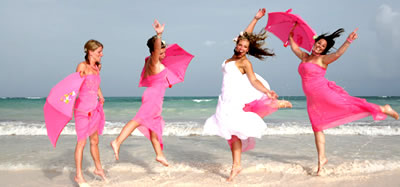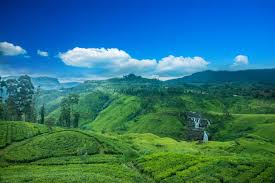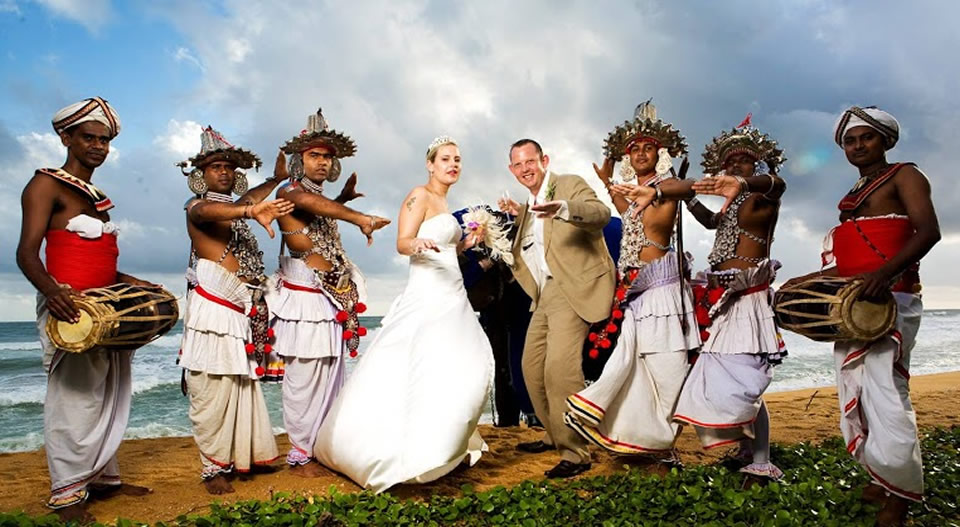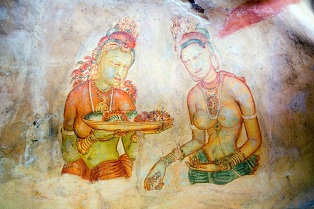

You are here: Home / Destinations / SIGIRIYA - SRI LANKA
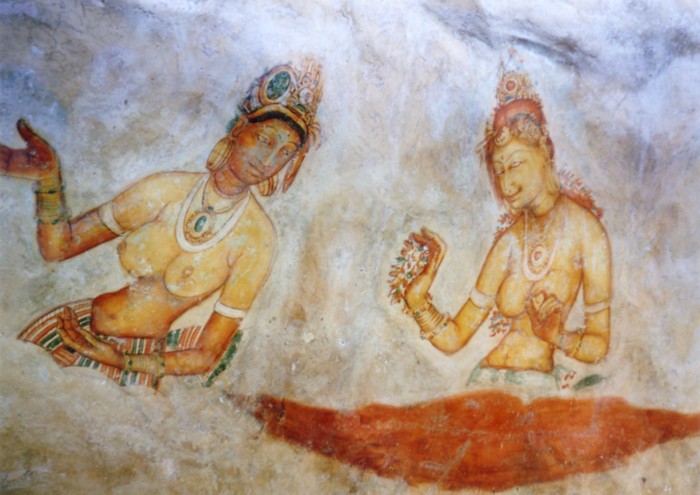
Sigiriya, a UNESCO World Heritage Site renowned as the "Fortress in the Sky," dating back to the 5th century AD, is located in the heart of Sri Lanka. Also known as Lion Rock, Sigiriya stands as a testament to the island's rich architectural and cultural heritage.
Perched 200 meters above the lush plains below, Sigiriya comprises a central rock surrounded by two vast rectangular precincts, each encompassed by moats and ramparts. This architectural marvel showcases the ingenuity of ancient Sri Lankan urban planning, with its meticulous symmetrical and asymmetrical elements, tiered gardens, and elaborate water features.
The city's design is centered around a precise square module, radiating symmetrically from the palace complex atop the summit. The eastern and western axes extend directly from this central point, showcasing a sophisticated urban layout unparalleled in its era.
At its zenith, Sigiriya housed the Royal Palace, intricate water management systems, and various ancillary structures, including guardhouses. One of its stairways hosts a rare treasure—the vibrant frescoes of 21 life-sized maidens, vividly depicting the artistry and grace of Sinhala secular painting from antiquity.
Among its highlights are the Water Gardens, Fountain Garden, Boulder Gardens, and the awe-inspiring Caves, each offering a glimpse into the royal lifestyle and architectural prowess of ancient Sri Lanka. Spanning 3 kilometers east to west and 1 kilometer north to south, Sigiriya stands as a testament to the grandeur and complexity of urban planning during the 5th century.
Sigiriya, also known as Lion Rock, was built during the reign of King Kasyapa I (477-495 AD) in ancient Sri Lanka. King Kasyapa, who ruled the island kingdom of Anuradhapura, chose to build his new capital at Sigiriya primarily for defensive reasons. He feared reprisals from his half-brother, Mogallana, whom he had overthrown and driven into exile.
The construction of Sigiriya began around 477 AD and continued through King Kasyapa's reign until his demise in 495 AD. The site was chosen strategically for its natural defenses—a towering monolithic rock rising 200 meters above the surrounding plains—and its central location on the island.
The fortress at Sigiriya was not only a military stronghold but also a symbol of power and kingship. The elaborate palace complex on top of the rock, along with its gardens, reservoirs, and defensive structures, showcased the wealth and technological advancements of its time. The architecture and urban planning at Sigiriya are considered some of the finest examples of ancient Sri Lankan craftsmanship and engineering.
After King Kasyapa's death, Sigiriya briefly served as a monastery before the capital was moved back to Anuradhapura. Over the centuries, the site fell into disuse and was eventually abandoned. It wasn't until the 19th century that Sigiriya gained global recognition when it was rediscovered by British archaeologists.
Sigiriya's historical significance led to its inscription as a UNESCO World Heritage Site in 1982, ensuring its protection and preservation for future generations. Today, Sigiriya stands as one of Sri Lanka's most iconic landmarks, attracting visitors from around the world who come to admire its architectural splendor and historical intrigue.
King Kasyapa I of Sri Lanka did kill his father, King Dhatusena, in a bid to seize power. Here's a brief overview of the historical context and events surrounding this incident:
King Dhatusena ruled the kingdom of Anuradhapura in Sri Lanka during the 5th century AD. He was a prominent ruler known for his construction projects, including irrigation systems that benefited the kingdom's agriculture.
Kasyapa was Dhatusena's son from a non-royal consort, and there was a dispute over succession to the throne. According to historical records, Kasyapa conspired with some supporters to overthrow his father. The primary reason behind Kasyapa's action was likely his ambition for power and fear of being sidelined in favor of his legitimate half-brother, Mogallana.
To execute his plan, Kasyapa imprisoned Dhatusena and forced him to abdicate the throne. Dhatusena was subsequently murdered, allegedly by being thrown into a well and buried alive. This act secured Kasyapa's position as king, though it led to him being condemned by Buddhist monks and later faced retribution from his half-brother Mogallana.
After taking power, Kasyapa moved the capital from Anuradhapura to Sigiriya (Lion Rock), where he built an elaborate palace complex atop the massive rock fortress. Sigiriya served both as a symbol of his authority and as a defensive stronghold against potential threats, including his half-brother Mogallana, who eventually led an army against him.
The assassination of King Dhatusena by Kasyapa remains a tragic and significant event in Sri Lankan history, reflecting the turbulent political dynamics and power struggles during that period.
Climbing Sigiriya Rock typically takes around 1.5 to 2 hours for most visitors, including time spent exploring the site at the top. The total time can vary based on individual fitness levels and the pace of exploration.
Here's a breakdown of the climb and important details:
Steps: There are approximately 1,200 steps to reach the summit of Sigiriya Rock. These steps are mostly made of metal staircases and ancient stone steps carved into the rock face.
Distance: The distance to the summit is about 1.5 kilometers (just under 1 mile) from the entrance.
Time: As mentioned, it typically takes between 1.5 to 2 hours to climb up to the summit, explore the ancient ruins and frescoes, and descend back down to the entrance.
Entrance: Foreign visitors usually enter Sigiriya through the dedicated foreigner's entrance, where tickets are purchased. From there, the climb begins through well-marked paths and stairways.
Difficulty: The climb is considered moderately challenging due to the steep staircases and the height of the rock, but it is manageable for most visitors with average fitness levels. Rest areas are available at various points along the way.
Best Time to Climb: Early morning climbs are recommended to avoid the heat of the day, especially if visiting during hot months.
It's advisable to wear comfortable walking shoes and carry drinking water during the climb. Guides are available at the entrance for those who wish to have a more informative tour of the site.
"Cyril was our driver and guide for the last nine days. We had the comfortable white Toyota van shown in the pic - it was just as clean and shiny, and not a scratch on it. He is clearly a very skilled driver. He is particularly knowledgeable about the history of the many places we visited. We were pleased we had Cyril as our driver. He had been recommended to us by an acquaintance. Andrew Speirs Melbourne, Australia Travel period 04 Jan - 12 Jan 2018" Mr. Andrew an Mrs. Suzy Speirs from Australia
"Cyril was absolutly Fantastic,Veryhelpful, Patient and extremly knowledgable. Wouldn't hesitate to recommend and travel with him again. Whole tour was well organized and perfectly done. Kate Williams and family from UK 04th January 2015" Kate Williams UK
"We came for a wedding and then embarked on an amazing holiday. Cyril show us magnificent sights and scenery of Sri Lanka. To do the country just we need to return with more time. Many of the sites we visited just made us want to know more about them, even though Cyril was a fountain of knowledge. We have thoroughly enjoyed spending time with Cyril and his excellent company, and it was so nice to go home a guardian angel looking after us. He is consistently courteous & good humored and now fe..." Andy Powell UK
"Dear Cyril, We want to thank you so much for making our trip so unforgetable and delightful. We received your name from our friends lives in Geneva who travelled with you in January 2009 and they gave you such a high recommendation that we decided to conbtact you for our two weeks trip this year. Although we have been to Sri Lanka a few times already. We have never found such an excellent driver and guide. It has been a great pleasure to visit Colombo with you and then to Koggala for two day tr..." Mr.Gabor Kato & Mrs.Ann Kato
"2nd to 15th November 2016 Dear Cyril, Thank you for arranging our first visit to your beautiful country. We had a very enjoyable, comfortable, safe, interesting and memorable holiday. All the accommodations you provided were very clean and comfortable and we will always remember the welcome, we felt when the smiling staff cheerfully looked after us and our every need. The itinerary you arranged was just right for us and made even better with the care you took whilst driving your very c..." Satwant and Doug from Australia
"Dear Cyril, Thanks for taking care of the Dr.Sethukavalar and his wife very well. They were indeed very happy for all the care you have shown during your tour. They were very impressed of your patience and kindness. I look forward to see you soon and maintain this good relationship we have developed in a short period of time. We will not hesitate a second to recommend you to all our friends who would like to visit Sri Lanka. Taking this opportunity of wishing you all the best. Thanks fo..." HARIDAS KANDASAMY
"Traveled in April 2013 with Cyril . Family with three young children. Cyril match the trip plan problem on his part. Familiar with every corner of this beautiful island and we have managed to produce a great 17 days. Prices respect as well - we tested three competing proposals and was the cheapest. The fact that he was working independently and not through an agency that collects coupon trips generally significantly reduces the price of the package. A modern and spacious vehicle (van with seven ..." Maozd
"Cyril is one of the best experienced person in the industry" Ahamed Anver
"Thank you so much Cyril for guiding us around your beautiful country. We thoroughly enjoyed our time which was made particularly special by your professionalism, enthusiasm and friendliness. We wish you all the best in the future. Warm regards from, Aonghus O'Keefee and Sheela Hendricks- Ireland " Aonghus and Sheela Hendricks- Ireland
" Dear Cyril We spent a wonderful week with you. We were so pleased to have to visited your beautiful country and we will recommend you for all of our relatives and to friends. It has been a pleasure to spend these days with you, we will never forget nice smile on your face all the time. Thank you and if one day you would like to visit Switzerland we will be raedy take you around snowy mountans! All the best, Franz family" Dr. David franz from Swiss

